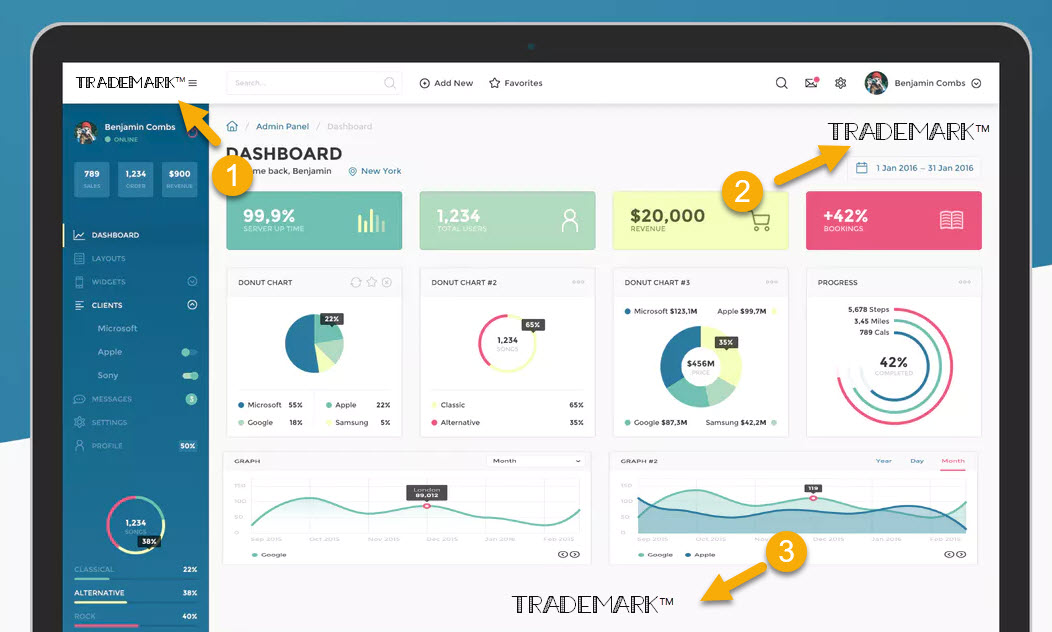Meeting the “Use in Commerce” Requirement for a Cloud-Based Software Trademark

When filing a trademark application for a cloud-based application, you are required to make dozens of legal decisions in order to successfully protect and register your trademark with the United States Patent and Trademark Office (the USPTO.)
One of the most difficult decisions is analyzing whether you have “commercial use” of your trademark that meets the USPTO (and the federal trademark law) “use in commerce” requirement, which is needed both to register a standard and “intent to use” trademark registration.
Applicants need to be careful. Unlike many of the steps in the trademark registration process, the USPTO is extremely strict about the use requirements. While it may allow you to re-file specimens, there are heavy restrictions and many applicants find that they need to re-file when they make an innocent mistake.
Proving commercial use of a cloud-based software platform, web app, SaaS, or other non-downloadable program that exists solely in the “cloud” can be tricky. The USPTO has two requirements: (1) a valid specimen and (2) “use in commerce.”
Jump to:
By following some best practices, you can help avoid issues and minimize delays in registering your trademarks.
This article is not a substitute for legal advice provided by an attorney. Each matter is unique and should be analyzed on its own merits by an experienced attorney.
Tip: Cloud-based software and “software as a service” (SaaS) are sometimes thought of as “software,” but are actually in a different class than a downloadable app or traditional software programs. If your application is a downloadable app as opposed to a non-downloadable service or platform, then you may need to file in a different class. Consult your trademark attorney to discuss the differences and to decide on the best way to move forward to protect your rights.
1. Valid Specimens
For cloud-based software or SaaS, specimens must show the USPTO that the average consumer would associate the trademark directly with the cloud-based software. The trademark should appear prominently in the cloud-based software itself, preferably in the header or in the log-in screen.
It should also appear on a page that clearly shows what the cloud-based software does – a list of all of the functionalities, with the trademark in the header works great for these purposes. Your specimen should clearly show the Examining Attorney (a government attorney and human being) that your specimen matches your services.
Specimen Example A: The Dashboard
- The trademark can be featured in the header of the entire cloud-based program.
- The trademark can be placed prominently on important product pages within the cloud-based app.
- In certain cases, the trademark may be featured in the footer. However, it must stand-out and be prominent.
Tip: The trademark could also appear on the sign-in page.

Specimen Example B: Informational Pages
The trademark should also appear on an advertisement page that shows the USPTO the functionality of the app. Remember, the functionality must match the identification on the trademark application.
For example, if you filed for “a website featuring technology to allow users to log their golf scores” then you would not be able to complete the registration using a specimen that only showed the functionality allowing users to register their tennis scores.
The trademark should appear prominently on its own, in a bigger font, style, size, color or other distinguishing element from the text around it.

I am using my trademark in paragraphs throughout my website. Isn’t that enough?
No, not if that is the only place the trademark exists. The trademark should not appear only within a paragraph of text. For example, if the trademark was DinoLonix™, then the following paragraph alone would not likely qualify for trademark use:
The Gerben IP software team is proud to announce DinoLonix™ the new cloud-based accounting platform that helps all types of people learn to manage their books and keep everything above board. Contact our sales team!
Have Questions
Confused about the commercial use requirement? Talk to one of our experienced trademark attorneys today.
2. Proving Use in Commerce
In addition to providing a valid specimen, the USPTO requires that the trademark be “used in commerce.”
This might seem obvious, but it is actually quite specific in meaning. It means that the cloud-based software must not only be available for users to use, but must have regular, real customers. If only your friends and family are beta-testing the service, it is not likely “used in commerce.”
Further, at least one of those users must be from across state lines, as the USPTO requires “interstate commerce” as a part of the use requirements.
This does not mean that you need paying customers using your cloud-based service – many services are free and/or ad-supported. However, having a friend or family member sign up for the service and logging-in for the sole purpose of meeting this requirement is not allowed (and is considered “sham use.”) Any trademark registration obtained with “sham use” as the only use before registration, will be subject to cancellation.
What is good evidence of “use in commerce”?
Invoices, sales receipts, user activity, and other information can help determine whether you meet the “use” requirement. None of that information will need to be submitted to the U.S. government.
However, you will be required to sign a sworn statement that your services meet these requirements. If they do not, then a third-party may be able to cancel the resulting trademark registration, which would result in the loss of valuable federal trademark rights, such as nationwide priority, a presumption of ownership, and a presumption of validity.
All of these benefits mean that enforcement is easier, and your trademark rights are stronger.
Final Thoughts
When in doubt, always contact your attorney. Use issues are some of the most common issues that applicants face and can render a trademark registration essentially useless. By providing specimens and sworn statements that meet the USPTO requirements, you are setting yourself up for success and eliminating potential issues in the future.
If you need help submitting your Cloud-based Software specimens or proof of use, contact the experienced attorneys at Gerben IP today.
Do you need assistance with a trademark matter?
Contact an Attorney Today